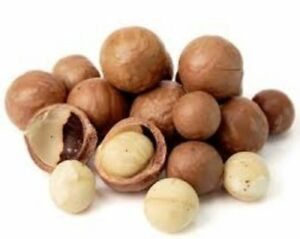Salmonella enterica is a common contaminant of macadamia nut kernels in the subtropical state of Queensland (QLD), Australia. We hypothesized that nonhuman sources in the plantation environment contaminate macadamia nuts.
 We applied a modified Hald source attribution model to attribute Salmonella serovars and phage types detected on macadamia nuts from 1998 to 2017 to specific animal and environmental sources. Potential sources were represented by Salmonella types isolated from avian, companion animal, biosolids-soil-compost, equine, porcine, poultry, reptile, ruminant, and wildlife samples by the QLD Health reference laboratory. Two attribution models were applied: model 1 merged data across 1998–2017, whereas model 2 pooled data into 5-year time intervals. Model 1 attributed 47% (credible interval, CrI: 33.6–60.8) of all Salmonella detections on macadamia nuts to biosolids-soil-compost. Wildlife and companion animals were found to be the second and third most important contamination sources, respectively. Results from model 2 showed that the importance of the different sources varied between the different time periods; for example, Salmonella contamination from biosolids-soil-compost varied from 4.4% (CrI: 0.2–11.7) in 1998–2002 to 19.3% (CrI: 4.6–39.4) in 2003–2007, and the proportion attributed to poultry varied from 4.8% (CrI: 1–11) in 2008–2012 to 24% (CrI: 11.3–40.7) in 2013–2017.
We applied a modified Hald source attribution model to attribute Salmonella serovars and phage types detected on macadamia nuts from 1998 to 2017 to specific animal and environmental sources. Potential sources were represented by Salmonella types isolated from avian, companion animal, biosolids-soil-compost, equine, porcine, poultry, reptile, ruminant, and wildlife samples by the QLD Health reference laboratory. Two attribution models were applied: model 1 merged data across 1998–2017, whereas model 2 pooled data into 5-year time intervals. Model 1 attributed 47% (credible interval, CrI: 33.6–60.8) of all Salmonella detections on macadamia nuts to biosolids-soil-compost. Wildlife and companion animals were found to be the second and third most important contamination sources, respectively. Results from model 2 showed that the importance of the different sources varied between the different time periods; for example, Salmonella contamination from biosolids-soil-compost varied from 4.4% (CrI: 0.2–11.7) in 1998–2002 to 19.3% (CrI: 4.6–39.4) in 2003–2007, and the proportion attributed to poultry varied from 4.8% (CrI: 1–11) in 2008–2012 to 24% (CrI: 11.3–40.7) in 2013–2017.
Findings suggest that macadamia nuts were contaminated by direct transmission from animals with access to the plantations (e.g., wildlife and companion animals) or from indirect transmission from animal reservoirs through biosolids-soil-compost. The findings from this study can be used to guide environmental and wildlife sampling and analysis to further investigate routes of Salmonella contamination of macadamia nuts and propose control options to reduce potential risk of human salmonellosis.
Source attribution of salmonella in macadamia nuts to animal and environmental reservoirs in Queensland, Australia,
04 December 2019
Foodborne Pathogens and Disease
Nanna Munck, James Smith, John Bates, Kathryn Glass, Tine Hald, and Martyn D. Kirk
